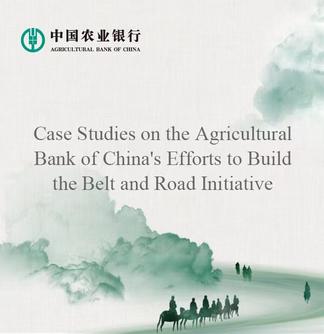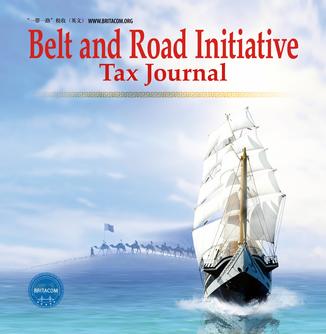A worker waters plants in the China-Africa Green Technology Park in Bir El Barka, Trarza region, western Mauritania, on May 22, 2025. The China-Africa Green Technology Park is a key demonstration project supporting Africa's Great Green Wall Initiative, launched in 2007 to create a 7,000-km ecological barrier across northern Africa and the Sahel to combat desertification. (Xinhua/Si Yuan)
by Xinhua writer Si Yuan
NOUAKCHOTT, June 3 (Xinhua) -- Under the scorching sun, rows of drip irrigation lines lay neatly across a stretch of sandy fields in Bir El Barka, a village in Trarza region, western Mauritania. Tender green vegetable seedlings sprout from the yellow sand.
Nearby, solar panels steadily convert sunlight into electricity, powering pumps that fetch groundwater to the fields. The partitioned desert, once barren, is now tinged with green, a vivid scene of transformation.
"This is not a short-term landscaping project but a truly sustainable green transition," said Tourad Medou, co-coordinator of the Mauritania Demonstration Project of the China-Africa Green Technology Park, as he walked through the plots, a freshly harvested eggplant in hand.
Medou, who graduated from Hunan University in China with a master's degree, now works at Mauritania's Ministry of Environment and Sustainable Development, responsible for promoting green cooperation with China.
Behind him, several local young workers were busy tilling the land and repairing drip lines.
Despite temperatures nearing 45 degrees Celsius, the vegetable seedlings looked lush and full of life.
"I never thought I'd be growing vegetables in the desert," said Mohamed Isselmou, the park's irrigation system technician.
A Mauritanian-Chinese partnership, the project is built and supported by the Xinjiang Institute of Ecology and Geography (XIEG), an affiliate of the Chinese Academy of Sciences (CAS).
Completed in July 2024, the 4-hectare park consists of a sand-blocking buffer zone, an orchard zone, a vegetable zone, a forage-growing zone, and a poultry farming zone.
Bir El Barka is located about 70 kilometers east of Nouakchott, on the edge of the desert. "We picked the location near the capital to facilitate technical demonstration and future training and extension," said Zhou Na, a member of an XIEG desert research team working on the project.
Situated in a tropical desert climate, the site suffers from chronic drought, high temperatures, sandstorms, and severe soil salinization. There are no natural pastures and little agricultural infrastructure. The area is not yet connected to the power grid, and local livelihoods have traditionally relied on herding, with hardly any sustainable income sources.
"Ecological and developmental challenges are deeply intertwined here," Zhou said. "We hope to explore a development model that is highly adaptable and scalable under these natural conditions."
"This land used to be just wasted sand. Nothing could grow here," Medou told Xinhua, pointing to the rolling dunes in the distance.
Thanks to the support of Chinese experts and the application of Chinese desert control technologies, including smart irrigation, sand-fixing nylon mesh grids, photovoltaic-powered water pumping, sand-based planting, and soil improvement, the once barren landscape is slowly turning green.
These technologies, Zhou said, which are widely applied in northwest China's Xinjiang Uygur Autonomous Region, have been adjusted before being "transplanted" across continents to suit local Mauritanian conditions.
The project has already completed trial cultivation of carrots, beets, mung beans, and other crops, with some reaching harvest and reseeding stages, forming the foundation for a virtuous ecological cycle.
The park focuses not only on ecological benefits but also on social impact. "All the technical workers during construction were local youth, some of whom were university graduates. The Chinese team provided systematic training, making the construction process itself a learning experience," Zhou said.
Eighteen locals participated in the construction phase, and six were later selected to stay on to handle daily operations at the park.
Former herders now operate water pumps, fine-tune irrigation systems, and manage seedling cultivation, and a new generation of "eco-craftsmen" is emerging from the desert, Medou said.
The China-Africa Green Technology Park is a key demonstration project supporting Africa's Great Green Wall Initiative, launched in 2007 to create a 7,000-km ecological barrier across northern Africa and the Sahel to combat desertification.
Mauritania, serving as the rotating chair of the initiative, hosts the Pan-African Great Green Wall Secretariat in Nouakchott, which coordinates related efforts.
In December 2024, during the 16th session of the Conference of the Parties to the United Nations Convention to Combat Desertification (UNCCD), Mauritania's Ministry of Environment and Sustainable Development, the country's National Agency for the Great Green Wall, and Chinese scientific and corporate representatives signed a memorandum to develop 10,000 hectares of carbon-sink forests. The project will use the China-Africa Green Technology Park as a prototype to build a standardized, replicable, and adaptive model for regional land management.
The Chinese expert team also hopes to expand the project's experience to a wider area. "In the context of building a China-Africa community with a shared future, China, the first country to achieve zero-growth in land degradation, has advanced technologies and ideas for combating desertification," Zhou said.
"With the demonstration zone just one year old, we will continue monitoring and research to develop a replicable and scalable technical model for Africa's Great Green Wall construction," she added.
"There is huge potential for Africa-China ecological cooperation, and Mauritania is well-positioned to be one of its starting points," Medou said. "The fact that the demonstration project has achieved significant results in under a year proves that China's desert control experience offers a practical and effective solution for Africa's arid regions."
An aerial drone photo taken on May 22, 2025 shows the China-Africa Green Technology Park in Bir El Barka, Trarza region, western Mauritania. The China-Africa Green Technology Park is a key demonstration project supporting Africa's Great Green Wall Initiative, launched in 2007 to create a 7,000-km ecological barrier across northern Africa and the Sahel to combat desertification. (Xinhua/Si Yuan)
Mohamed Isselmou, the China-Africa Green Technology Park's irrigation system technician, introduces irrigation equipment in Bir El Barka, Trarza region, western Mauritania, on May 22, 2025. The China-Africa Green Technology Park is a key demonstration project supporting Africa's Great Green Wall Initiative, launched in 2007 to create a 7,000-km ecological barrier across northern Africa and the Sahel to combat desertification. (Xinhua/Si Yuan)
An aerial drone photo taken on May 22, 2025 shows the China-Africa Green Technology Park in Bir El Barka, Trarza region, western Mauritania. The China-Africa Green Technology Park is a key demonstration project supporting Africa's Great Green Wall Initiative, launched in 2007 to create a 7,000-km ecological barrier across northern Africa and the Sahel to combat desertification. (Xinhua/Si Yuan)
An aerial drone photo taken on May 22, 2025 shows the China-Africa Green Technology Park in Bir El Barka, Trarza region, western Mauritania. The China-Africa Green Technology Park is a key demonstration project supporting Africa's Great Green Wall Initiative, launched in 2007 to create a 7,000-km ecological barrier across northern Africa and the Sahel to combat desertification. (Xinhua/Si Yuan)
An aerial drone photo taken on May 22, 2025 shows the China-Africa Green Technology Park in Bir El Barka, Trarza region, western Mauritania. The China-Africa Green Technology Park is a key demonstration project supporting Africa's Great Green Wall Initiative, launched in 2007 to create a 7,000-km ecological barrier across northern Africa and the Sahel to combat desertification. (Xinhua/Si Yuan)
Tourad Medou (R, Front), co-coordinator of the Mauritania Demonstration Project of the China-Africa Green Technology Park, talks to workers in Bir El Barka, Trarza region, western Mauritania, on May 22, 2025. The China-Africa Green Technology Park is a key demonstration project supporting Africa's Great Green Wall Initiative, launched in 2007 to create a 7,000-km ecological barrier across northern Africa and the Sahel to combat desertification. (Xinhua/Si Yuan)
Photo taken on May 22, 2025 shows plants in the China-Africa Green Technology Park in Bir El Barka, Trarza region, western Mauritania. The China-Africa Green Technology Park is a key demonstration project supporting Africa's Great Green Wall Initiative, launched in 2007 to create a 7,000-km ecological barrier across northern Africa and the Sahel to combat desertification. (Xinhua/Si Yuan)
Photo taken on May 22, 2025 shows solar panels in the China-Africa Green Technology Park in Bir El Barka, Trarza region, western Mauritania. The China-Africa Green Technology Park is a key demonstration project supporting Africa's Great Green Wall Initiative, launched in 2007 to create a 7,000-km ecological barrier across northern Africa and the Sahel to combat desertification. (Xinhua/Si Yuan)
Photo taken on May 22, 2025 shows plants in the China-Africa Green Technology Park in Bir El Barka, Trarza region, western Mauritania. The China-Africa Green Technology Park is a key demonstration project supporting Africa's Great Green Wall Initiative, launched in 2007 to create a 7,000-km ecological barrier across northern Africa and the Sahel to combat desertification. (Xinhua/Si Yuan)
An aerial drone photo taken on May 22, 2025 shows the China-Africa Green Technology Park in Bir El Barka, Trarza region, western Mauritania. The China-Africa Green Technology Park is a key demonstration project supporting Africa's Great Green Wall Initiative, launched in 2007 to create a 7,000-km ecological barrier across northern Africa and the Sahel to combat desertification. (Xinhua/Si Yuan)
An aerial drone photo taken on May 22, 2025 shows the China-Africa Green Technology Park in Bir El Barka, Trarza region, western Mauritania. The China-Africa Green Technology Park is a key demonstration project supporting Africa's Great Green Wall Initiative, launched in 2007 to create a 7,000-km ecological barrier across northern Africa and the Sahel to combat desertification. (Xinhua/Si Yuan)




 A single purchase
A single purchase









